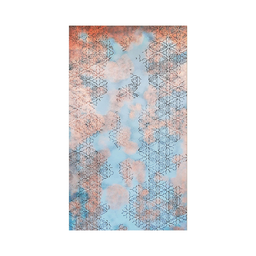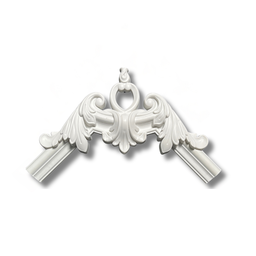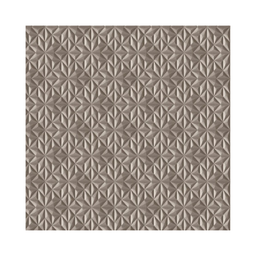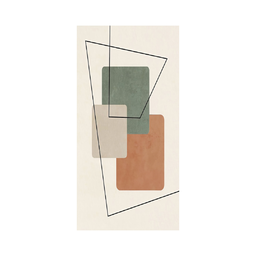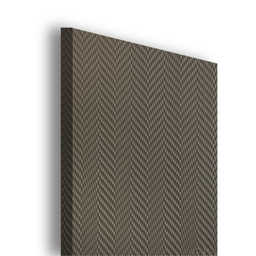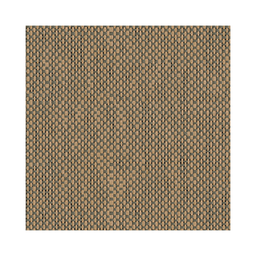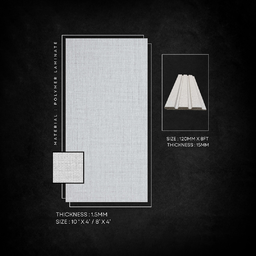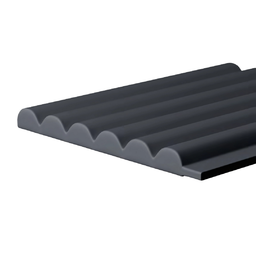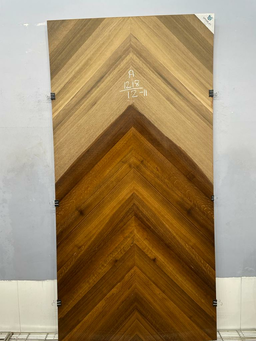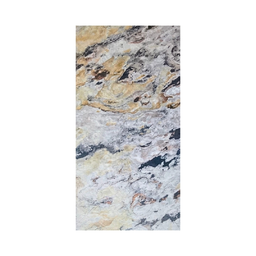The handy guide for adding the best lighting plan to your home!
There is nothing good lighting can’t do. It plays a key role in adding the ambience of your choice in a room or chosen area. The correct lighting setup can make a room feel brighter, bigger, and inviting. Lighting is truly a game changer in home interiors and should be given utmost importance as you would give to other home design elements. By combining natural and artificial light sources, you can imbibe a brand-new feel to the space and add to its decor or aesthetics as well!
The Importance Of Lighting In Interior Design

Lighting can make or break the design features of any space. A well-lit room helps add a functional and inviting atmosphere in a home. A fine blend of natural and artificial lights can lift each corner of the room and also accentuate the look and feel of the wall color, furniture, flooring, soft furnishings, and decor objects.
It is essential to include creative use of lights in the home or space decor. From attractive lamps, floor lights, and chandeliers to fan lights, etc should complement the interior style of your home. You should select the light types that form a perfect balance between functionality, comfort, style, and budget!
The key to adding attractive decor and functional interiors is to understand the knack for proper lighting management. Finding your personal and unique design needs is key to adding the required light setups and making the interior complete in every way!
Types of Light:
Lights can be broadly classified as natural and artificial lights. Natural lights including sunlight and moonlight are subject to the earth’s movements and celestial bodies. Whereas artificial or man-made lights are flexible in terms of color, intensity, type, and style. Also, combustion lights make an amalgamation of natural and artificial light sources and make a key addition to the interiors of space.
Here are 5 common types of artificial lights included in interior lighting:
Ambient or General Lighting

Ambient or general lighting is added for overall and uniform illumination in a room. It is considered the first layer of lighting and is used for day and night usage. Ambient lighting with dimmers can help control the lighting level as per the requirements and occasions. Recessed lights, flush-mount fixtures or chandeliers are commonly added for general lighting purposes.
Task Lighting

Task lighting provides the required illumination to perform general tasks like cooking, baking, studying, reading, pursuing hobbies, and more. Proper task lighting provides a visual aid and does not put pressure on the eyes. Appropriate task lighting helps The LED table lamp at the study desk and spotlights in your kitchen are the common examples of task lighting.
Accent Lighting

Accent lights are added to focus light on a chosen area, corner or objects in a room. It helps highlight specific features like textured walls, wall paintings, photo frames, sculptures, attractive plants, and more. Apart from adding a required focus on chosen things, Accent lighting like spotlights, track lights can bring in the required focus on the objects and also add general illumination in a room.
Mood lighting

Mood lighting as the name suggests can allow for introducing the mood or vibe of your choice. The common types of mood lighting include dimmers, color-changing lights, table lamps, LED strip lights, string or fairy lights, aromatic candles etc. Mood lights are perfect to lift your mood after a demanding day or create a perfect vibe for special occasions!
Smart Lighting

Smart lighting includes a specific set of lighting technology that is designed to upscale the lighting efficiently and save energy. It uses Artificial Intelligence (AI) and the Internet of Things (IoT) to auto-regulate the color and intensity as per the surroundings and requirements. These light bulbs and fixtures can be controlled remotely with WIFI or Bluetooth or through voice commands.
Advantages and Disadvantages of Interior Lights
Advantages:
-
Lights are functional and allow for visibility in all rooms or chosen spaces.
- Artificial lights are a practical substitute for natural light and can be regulated as per your requirements.
- A layered lighting design works as a mood enhancer and can keep the depressing atmosphere at bay.
- Attractive lighting fixtures appear ornamental and add to the aesthetics of the space.
Disadvantages:
-
Lightning comes with a certain price, both in terms of light fittings and energy consumption.
- Lighting design done haphazardly or without experts' help can cause eye strain, irritation, and stress.
- You need to be careful about light wiring and heat emission as the same may cause shocks or burns.
- Maintenance is the key to ensuring light efficiency and consistency.
Do's and Don’ts of Lighting
Do’s of Lighting
-
Do consider the functionality aspect of each area or room. Always select the light as per the room and also as per the furniture types since certain furniture objects will need a specific type of lighting i.e.under cabinet lights, or bias lighting.
- Do include a dimmer or light-intensity regulator to keep the lighting mood responsive and create an atmosphere of your choice.
- Do maintain the evenness or uniformity of color and intensity across all rooms. As harsh or sudden changes in lights can cause stress, irritation and eye fatigue.
- Do note that a 60 or 70-watt bulb can make too bright a choice for mood lighting. A 40-watt bulb makes an ideal choice.
- Do add diffusers in rooms for blurring out the harsh glare of lights. It adds to the soothing appearance and atmosphere as well!
Don'ts of Lighting
-
Never settle for just one central light source as it can create unflattering shadows. Always have a layered lighting plan for all the rooms in your house. It adds depth and dimension to any corner or room.
- Don’t neglect the concealed wiring systems. A jumbled display of open or bare wires is not so aesthetically pleasing and is not ideal for homes with kids or pets.
- Avoid selecting lights based on looks or aesthetics only. Consider the light fixture’s lighting output and performance. Pay attention to the type of bulbs and the wattage you require to get the maximum benefit from the chosen light fixtures.
A) Interior Lights
Each room or area of your house needs different lighting requirements. Listed below are the common rooms or areas where appropriate lighting can make a difference and make it functional and inviting!
Living room

The living room is a space or hub of various activities like working, watching TV, studying, and relaxing after a long tiring day. For ambient lighting, recessed fixtures, downlights, and ceiling cove lights, make a common choice. Task lights like adjustable table lamps or floor lamps by the seating are a comforting option. Bias lighting behind the TV is a must-have option to minimize the strain on the eyes and enjoy your television time. And trendy hanging pendants, chandeliers, and wall sconces can be added to the living room to complete the accent lighting needs.
Dining Area Lights

The dining room is a special space in your home where you enjoy food with your family or loved ones and make lasting memories. Opt for a multi-light chandelier that is perfect for adding even light distribution in a dining room. It can help eliminate the shadow spots and allow you to enjoy your meal and connect with others. To form that cozy and chatty ambience, glass globe or cluster pendants make a modern choice for dining room lights.
For the accent lighting, you can add wall sconces, and table lamps near the dining zone for added layers of light. Candles on the dining table come in handy to create a cozy and memorable atmosphere. Also, it is recommended to have dining room lights on dimmers for controlling the layers of lights and creating the vibe as per your requirement!
Kitchen

The kitchen is the heart and soul of your home and is generally utilized for performing various tasks like cooking, making lists, eating or studying (if the dining zone is connected to the kitchen). Uplights or recessed lights at the top of kitchen cabinets are mostly preferred for general or ambient lighting requirements. Task lights like strip lights under the cabinets and shelves make for great shadow-free light.
For accent lighting needs, opt for recessed lights or low-glare downlights that can be added to cabinets with glass fronts to showcase your luxury crockery and serveware!
Bedroom Lights

A bedroom is a private space in the home and makes for a multitasking space where you sleep, relax, read, or even do office work. Recessed lights, flush-mounted fixtures, or tape lights make a trendy choice for general or ambient lights. Attractive wall sconces, table lamps, or pendants can be added for task and accent lighting purposes.
Decorative candles can bring a soft glow to the bedroom when you wish for the cozy and romantic atmosphere!
Study room

The study room needs both natural and artificial lights to perform the tasks in hand i.e.study, working at different times of the day. Adjustable desk lamps make a go-to choice for task lights which allows you to move the neck and head of these lights at various angles. Under cabinet spotlights, strip lights can also keep the study zone well-illuminated and allow for interesting accents like books, and wall art to be in the spotlight!
Also, wall-mounted sconce lamps near the bed can allow kids or room occupants to read books, or novels without having to add pressure on the eyes.
Staircase

It is pretty essential to keep the staircase zone well-lit for safety purposes and to avoid accidental mishaps. Wall-mounted recessed lights, spotlights are a great way to illuminate the stairs with a soft glow. Strip lights under the stairs or railing look attractive and aesthetically pleasing. Also, wall sconces, strip lights, and hanging pendants make a good choice to keep the staircase zone looking interesting!
Bathroom Lights

A bathroom in your home with perfect lighting design does more than you can imagine. From basic illumination to adding the wow factor, you need to have a layered lighting plan regardless of its size.
Good mirror lighting or wall sconces on the side of the vanity mirror makes a perfect option for performing grooming tasks. Ambient lights like recessed light fixtures are good for providing basic, ambient lighting. Indirect or cove lighting can give a soft, warm touch to the bathroom.
B) Exterior Lights
Exterior lighting is a perfect way to beautify homes, offices, or chosen spaces. Plus, these lights play a key role in contributing to the safety and security of the spaces too. Well-chosen outdoor lights form a lovely landscape-like scene, especially after the dark!
- Based on the outdoor space i.e.balcony, home garden, pathway, and backyard you can select the ideal external light fittings with some LED light fixtures.
- For ambient lighting - wall lights, hanging lights make a great option to illuminate the outside of the home areas.
- For task lights - pathway lights, posts are a suitable option. Plus these lights can be installed for safety and convenience purposes too.
- For accent lighting - spotlights with landscape kits can be added to make the outdoor space more inviting and captivating.

Here are some of the common types of outdoor lighting choices:
- Floodlights - These are perfect for illuminating larger outdoor areas. These are brighter versions of spotlights and help cover a wider range or area. Perfect for patios and driveways, these are mostly installed like downlighting.
- Step Lights - Step lights as the name defines are placed on or beside the stairs as a form of uplighting. As a home design rule, steps should always be well-lit to avoid accidental falls or mishaps. For safety reasons, it is essential to add step lights on stairs, both inside and outside of your home.
- Garden Lights - These lights make a functional as well as decorative solution for adding flair to the garden area. By setting them up at required places and angles, you can cover larger surfaces and highlight specific objects like attractive plants or planters!
- Bollard lights - Bollard lights appear similar to posts and can be at a uniform distance at the pathways. These are perfect for keeping the outdoor area well-lit and safe. Plus bollard lights mostly feature a peculiar design wherein light can shine in every direction.
- String Lights - String lights or fairy lights make a lovely addition to illuminating the balcony, patio, and outdoor spaces. These can be chosen from attractive shapes and sizes and hung through plants, trees, and hardscapes like pathways, balcony railings, etc.
Know more about outdoor decor and make a perfect balcony design in your home!
Lighting Effects
DownLighting

Downlighting is a common form of lighting. Spotlights are a popular type of downlights and are placed in numbers at a uniform distance. Since downlights alone can cause awkward shadows, they should be added with ambient lights like wall sconces, floor lamps, and LED lights.
Uplighting

As the name suggests, uplighting includes adding the light fixtures like uplights or spotlights close to the ground level. These are placed in such a way that the emitted light bounces off to the ceiling and provides an even distribution of light. Uplights are used for highlighting the unique features of a room like murals, artwork, etc. Uplights are added for staircase lighting too!
Wall Washing

Wall washing is a common but interesting lighting technique that is used to highlight smooth blank surfaces like painted drywall. The distance and placement are crucial for the wall washing effect. The source of the light i.e.downlights or spotlights should be mounted at a proper distance from the wall so that the light falls on the wall at a wider angle i.e.2 ½ -3 feet.
The wall-washing effect can be added to walls with lights mounted at or above the ceiling which can wash up around 8-9 feet of vertical wall that results in soft illuminance.
Wall Grazing

Wall grazing is another lighting technique that is preferred to highlight the interesting design or textures on the walls. Mostly rough textured surfaces i.e.natural stone walls are given focus and attention with wall grazing method. The chosen light fixtures like downlights or spotlights are angled in such a way (ideally mounted at or above the ceiling or under the floor) that it highlights the textured surface of the wall and adds to the room’s decor!
Spotlighting

Spotlighting is effective for highlighting specific design and decor features in a room. From textured walls to sculptures on the shelves, spotlights are perfect for creating a much-needed focus on the accents in interiors. By adding focus on the ‘interesting’ things in a space, you can draw away the attention from not-so-flattering corners. Spotlights can also be utilized as task and accent lights as it focuses on specific features!
Perimeter Lighting

Perimeter lighting is effective to add a touch of vastness in a chosen room. These lights are added to expand the available size and dimensions of a space. Cornice or coving lights make an ideal choice for perimeter lights and are preferred by interior experts!








